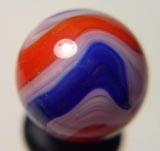Currencies
Inkspot Info
More Information
Date Guide Links
Determining the Age of Vintage and Antique Items
Establishing the age or date of a manufactured item can sometimes be quite easy. Most often, however, you have to piece together a number of clues and make inferences. Below are some clues to look for. Of course, there are exceptions to some of these rules of thumbs, and you have to consider design elements, manufacturing materials, and use some common sense, to determine the general era of manufactured items. Of course when an item is marked by the maker's name, you can narrow down the period that the company was in operation through internet searches. Some companies had their own system of codes for dates. Many companies changed their markings or names on specific dates. A patent or registry number can pin down a date precisely. Some cameras and lenses had serial numbers that began with letters and numbers to indicate the year and factory our country of manufacture. At the other extreme, handmade items of any period can be extremely difficult to age, so form, purpose, composition, and wear are important indicators of these items.
Country of origin
The McKinley Tariff act of 1890 required imported merchandise to have the country of manufacture. Prior to that, top quality "prestige" merchandise might still have the country of origin, but most often they would have the company name and or mark. An unmarked ceramic, for example, could have been imported before 1890, or American made, after 1890, or was designated with a paper label that wore off.
In 1914, the tariff law was revised to require the phrase "Made in..." was required. Thus, an item labeled "France" could have been imported between 1890 and 1914, and an item marked "Made in France" was likely imported after 1914. In more recent years, the phrase "Made in" is sometimes dropped. From any period, the country of origin marking may consist of a paper label or sticker that may be removed. For all these reasons, the country of origin marking is not always reliable, so look for other clues about the age of an item to make sure they are consistent with the purported age of an item.
There are certain country names that can definitely pin down a date. For example, "Nippon" was only accepted for items made in Japan until 1921. Here are some general rules:
| Nippon | 1890 to 1921 |
| Occupied Japan | 1945 to 1952 |
| Czecho-slovakia (with a hyphen) | 1920s |
| German US Zone | 1945 to 1950 |
| Western Germany | 1950-1989 |
| Taiwan | mostly after the mid- 1970s |
| Hong Kong | mostly 1970s to 1990s |
| German States (e.g. Bavaria) | before 1914 |
Other markings
| Depose (French for registered) | mostly early 1900s |
| Bone China | after 1915 |
| Microwave safe | after 1970 |
| Ovenproof | after 1935 |
| Patent pending | after 1940 |
| Patented | mostly after 1900, but earlier |
Bar Codes and Zip Codes
If a paper product shows a zip code, it was made after 1962. The first bar code appeared on a pack of Wrigley's chewing gum in 1974.
Helpful Links
Below are some great links we have discovered on the web that can help you identify company marks, silver hallmark codes, and other information to establish the age of vintage and antique items. When you click the link, you will leave our website. If you want to return, click the back button on your browser.
English Registered Design or Trade Mark
General Info on dating English ceramics and marks

 Buy Akro Agate Popeye marbles on eBay!
Buy Akro Agate Popeye marbles on eBay!